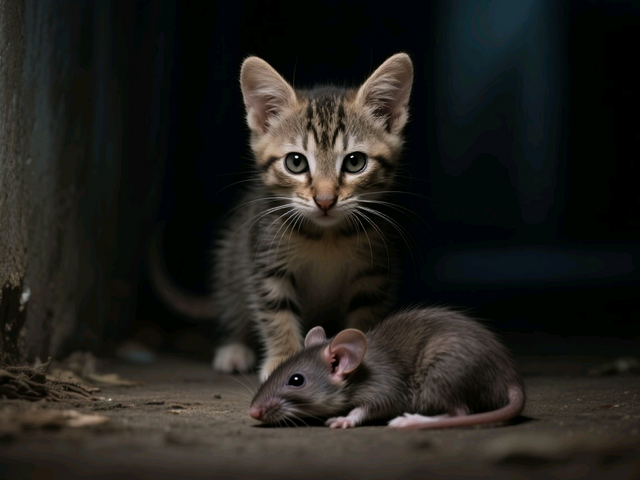Natural enemy restraint
How Terrifying Is Being Countered by a Predator's Trait? — Genetic Suppression and the Rules of Survival
Summary (Preview):
A predator's "counter" isn't a metaphor — it's a survival rule written in genes. Even if you're the dominant adult, at first sight you may only think of fleeing. This article breaks down four types of suppression — full overwhelm, clever outplays, numeric dominance, and exploiting weak points — and finishes with humans as the ultimate predator. Perfect for science popularization, social sharing, and Steemit publishing.
Lead-in
In nature, "countering" is the coldest play. It shows no mercy for size or age. Below we explain, by type, why predators suppress so thoroughly — and how that shapes ecology and evolution.
Type 1: Full Overwhelm — The Classic Cat vs. Mouse Script
- Quick case: cat vs. mouse.
- Mechanism: the target suffers not only physical damage but also behavioral suppression (e.g., slowing, stunning, panic-induced freezing).
- Biology note: for example, cats require taurine to maintain night vision; if prey contains abundant taurine it may trigger stronger hunting drive (original phrasing retained).
- Outcome: the suppressed often instantly lose ability to resist — fleeing becomes the only option.
Type 2: Clever Outplay — Venomous Snake vs. Honey Badger (and other strategy-based counters)
- Quick cases: venomous snake vs. honey badger, chicken vs. centipede, Chinese pond turtle vs. snake.
- Mechanism: not brute force but specialized strategy and endurance — toxin resistance, physical counterattacks, armored defenses, etc.
- Typical effect: the honey badger can survive a snake bite and recover (sleep it off), then physically finish the snake; the closing-shelled turtle can clamp and asphyxiate a snake.
- Takeaway: when defenses or counters are highly specialized, they can reverse outcomes even against toxic or larger opponents.
Type 3: Numeric Dominance — Dragonfly’s “tech” dominance over mosquitos
- Quick case: dragonfly vs. mosquito.
- Mechanism: order-of-magnitude differences in sensory organs and flight control translate into a technical, overwhelming advantage (e.g., compound eye facet counts, maneuverability).
- Outcome: very high hunting success rates (the original text cites 97% as a narrative figure), converting “quantity/quality” advantages into stable survival gains.
Type 4: Exploiting Weak Points — How Orcas Take Down Great White Sharks
- Quick case: orcas flip great whites to induce tonic immobility and suffocation.
- Mechanism: target a physiological vulnerability (e.g., respiration mechanics, flip-induced paralysis), causing lethal consequences with minimal cost.
- Insight: once a key weakness is found and exploited, the battle can reverse in a very short time.
Final Chapter: Who Is the Strongest "Suppressor"? — Humans
- Statement: since humans appeared, with tools, fire, cooperation, cognition, and technology we have achieved broad suppression over many species and become the "ultimate predator."
- Further thought: this power brings both ecological expansion and major ethical and ecological responsibilities.
If you like this article, please like, forward and follow me @funge for more interesting works
